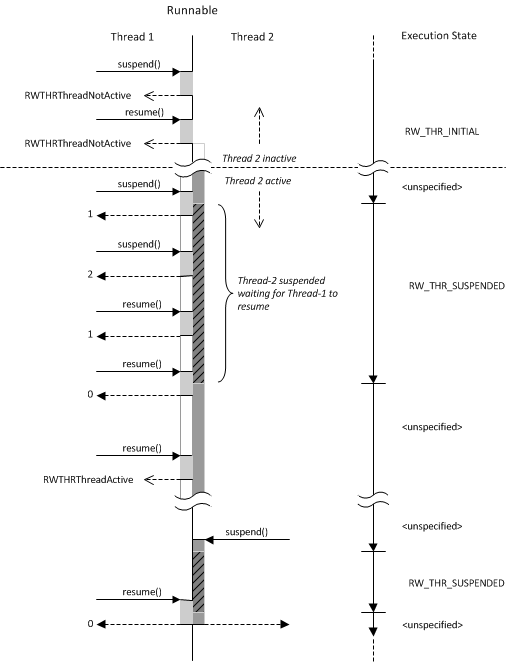Suspending and Resuming Execution
The thread in a threaded runnable can suspend its own execution or can be suspended by another thread. This operation is implemented by the following functions:
Suspension is an interruption in the execution of a thread. A suspended thread remains ineligible for execution until continued or resumed. Suspension is asynchronous—the suspended thread has no control over where and when it can be suspended. Only threaded runnables can be suspended. This capability is not included in the synchronous runnable classes.
When a threaded runnable is suspended, its execution state is set to RW_THR_SUSPENDED[18]. When the runnable is resumed, its execution state is restored to the state that existed before the suspension occurred[19].
Figure 14 shows the interaction and state changes associated with the suspension process.
Figure 14 – Suspend and resume operations — interaction and timing

To suspend a thread created by a threaded runnable, use the suspend() function included by the RWThread handle class. A thread inside a threaded runnable can suspend itself by calling the RWThreadSelf::suspend() function.
The RWThread::resume() function is used to resume a suspended thread. A suspended thread cannot resume itself.





